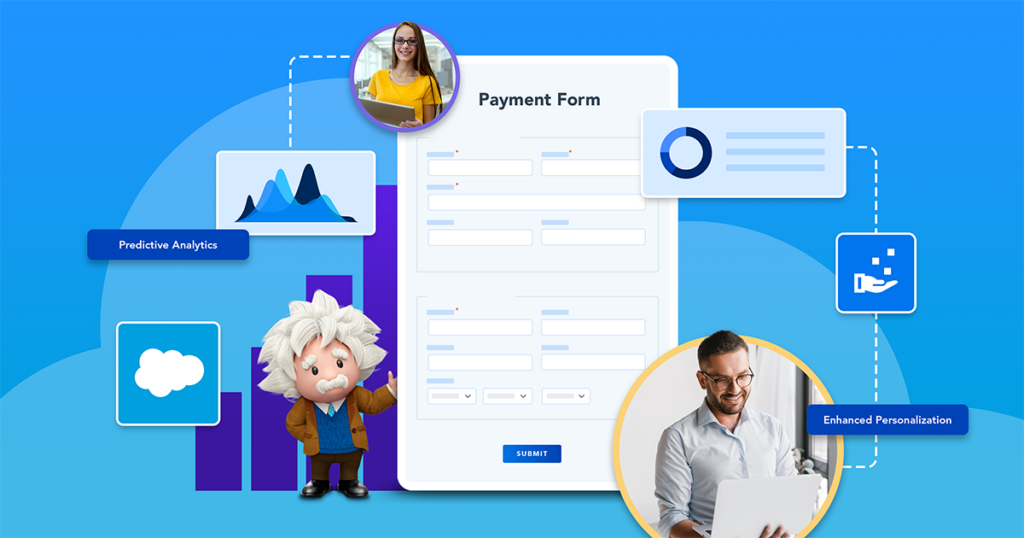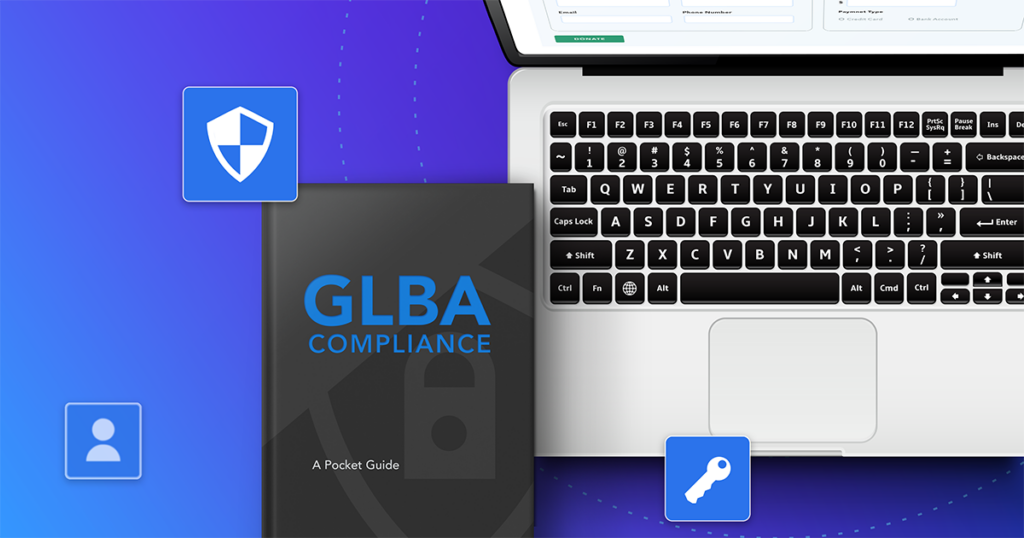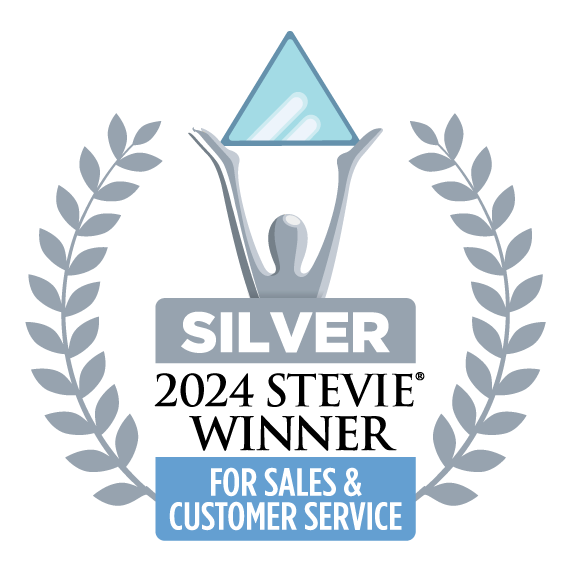If you work in higher education, you know the unique challenges faced by your industry. Your institution is likely undergoing a digital revolution, one that was accelerated by the pandemic.
As you’ve welcomed students back on campus, you’re aware that they expect seamless digital experiences that can only be accomplished with modern technology. Plenty of solutions already exist that can help, but that doesn’t mean you won’t face resistance from faculty, staff, and sometimes even the students themselves.
In our webinar with Cloud for Good, the University of Southern California and Tyndale University shared their real-world experiences of successful tech adoption amidst resistance and how it improved their data collection processes across campus.
USC Viterbi School of Engineering
Guest: Coleman File, Associate Director, Graduate Admission, USC Viterbi School of Engineering
Challenge
From my experience within higher ed, you see a lot of siloed information, a lot of siloed databases. When you’re dealing with so many new students coming in and applications, it’s difficult to consolidate that.
We had a huge problem with putting all of our data together and really consolidating databases. And we have a very large application pool of over twenty thousand applicants a year to our engineering programs, and we were on the graduate admissions side for master’s degrees.
We had our Outlook database flooded with students asking for updates on their applications and why this or that was happening. Having different systems becomes a nightmare with so many applicants.
We were also going back and forth between multiple applications, systems, and different tools at USC to figure out student problems. We also didn’t have a true contact form before. Everything came through email, and we weren’t able to organize that communication.
We needed to consolidate our different antiquated databases and put our communications and reporting across terms or years under one roof. That was the biggest problem we were trying to solve — all of those applicants, all of that applicant data, and trying to get it consolidated. We wanted a global picture of all our processes. And we needed a CRM tool that would help us do that.
Resistance
Moving away from a historical legacy way of doing things will always have resistance. We had been doing the same thing, the same way for upwards of ten years. We wanted to focus on big wins like being able to just have one place to search for all of your contact information, all of your historical application information, and so on.
But I think that the biggest resistance is always in the little details that people get caught up in because that’s the way it’s always been. They don’t see that transitioning into this new platform could take away the big problems, the big pain points, and then eventually you can solve those little pain points that people get stuck on.
We had resistance, but we were ultimately able to show stakeholders involved in the process what the big wins were and when they’re able to see that, we could fight back against resistance.
Larger universities are going to require more approvals, more people involved, more stakeholders, and that kind of thing. In that respect, you want to have dean’s level support and proposed level support as opposed to just being able to network with a couple of different contacts in the department and roll something out new.
Solution
Ultimately, we implemented Salesforce because of its reputation, scalability, and flexibility. We were able to solve reporting problems immediately. Salesforce solved the issue of gathering all of that data and reporting on it quickly.
We moved from manually going into historical databases, downloading spreadsheets, and putting them all together every time someone asked for a new report. Now we have all of the data housed in Salesforce where we can report on it through dashboards. We were also able to bring all of our communications under that roof.
We used FormAssembly to help with one of our big projects throughout the year, which is to do a pre-review of all of our applicants. Before, we did that through different spreadsheets and systems.
We worked with our implementation partner and were able to use FormAssembly to do all the reviews with our seasonal workers from GPA reviews and get that back into Salesforce quickly. Then we were able to use that data to organize and rank our applicants. It really streamlined our efforts.
We also used FormAssembly to provide a great solution for contact forms, helping us organize that with the help of Salesforce. The connection between the two systems allows us to know where individuals are in the cycle, whether they just applied, have been contacted, or were admitted to the college, and funnel those to our communication teams. The two solutions together have helped us retire a lot of outdated processes.
We rolled it out very slowly in terms of showing people what it can do. Our core file review team was the quickest to be able to adopt the new technology. So we were able to take away pain points of the old processes and show them how much more they could get out of the Salesforce database. From there, we moved across to admissions and student affairs teams and scaled up to the directors and leadership.
Looking Ahead
We have some big summer projects. We started with the admissions, applications, and review side of the equation, and now we’re moving more into recruiting.
We just finished the testing phase of our recruitment build. Now we’re going to be incorporating FormAssembly into actual recruitment events to track attendees, registrants, and people who shop at booths, grad fairs, etc. We have recruiters in India and China, and then we have the whole team going through the U.S. Tying that piece together is our next big phase of development.
We’re also looking at replacing legacy application systems and smaller programs with FormAssembly and incorporating all of that into Salesforce. We want to retire as many of the old ways of doing things and bring them under our Salesforce build.
Tyndale University
Guest: Andrew Mugford, Digital Marketing Specialist at Tyndale University
Challenge
The first problem we saw was our admissions recruitment database, which was a built product we had gotten from a different school. It wasn’t serviceable and it wasn’t being developed anymore. We had to replace it.
The implementation partner that we chose happened to bundle FormAssembly with Salesforce, so that’s how we started. Eventually, they became unbundled and after looking at a few different options, we stayed with FormAssembly.
When I came on board to manage Salesforce and all the processes, one of the problems I wanted to solve was our resident application process, which was a combination of standard web forms, Excel spreadsheets, and emails.
Resistance
Sometimes people look at Salesforce as being too overwhelming because it’s almost too flexible. They would rather get a solution that is a more tailored tool for your particular use case. You don’t always know what you want it to do until you have the solution.
I think some people find this blank slate more of a black hole when they look at it because they don’t understand. In general, I think people were ready and had been waiting for a solution, but we just didn’t have the tools. So, buy-in itself wasn’t difficult.
However, we were taking away some flexibility in terms of the processes. We were forcing certain departments to define a process that they’d never defined before or had only loosely defined. Previously, the process was emails and spreadsheets, which is basically paper and pencil.
I wouldn’t say there was resistance, but that we needed to give serious thought to things we’d not thought about before. So when you ask one person, how does this work? They’re not giving a different answer than someone else.
We had meetings with reps from each department, including student life, the business office which handles the money part, campus services that do maintenance, and the web team so we could link everything to the website. There happened to be people in the room that would reiterate the value of what I was saying about needing a process and making changes.
Depending on how your institution is structured, this process may or may not be driven by IT. So it’s important to have people that can translate between users who are not tech-savvy and simply want things to work and their jobs to be easier, not harder.
An implementation of a tech new product is an amazing excuse to get together in a room and talk through how your processes are meant to operate. And that’s not always gonna be a comfortable conversation. There are always gonna be certain silos.
No one wants their job to be harder. Sometimes you have to manage conflict. Depending again on your organization, having an executive sponsor can be really helpful in those situations to help overcome those hurdles.
I work with great people. But we’re managing personalities and opinions through this process too. I would approach the change as first getting buy-in and then getting the requirements assuming we’re going to build.
Be mindful of the fact that just because you understand it and you see the picture of the vision, and you’re committed to it, doesn’t mean other people do. And you have to nurture that side of it because we’re all people, and we all want to enjoy coming to work.
When you’re implementing technology, what you’re really doing is affecting people, whether it’s employees or students, or whoever. You have to always think about that.
Solution
We built a program in-house called TRAM, Tindell Residence Application Module. The advantages are its native connection to Salesforce. You don’t need an integration like Zapier to make that connection.
The Salesforce Prefill Connector is my favorite connector. It lets you access the information you already have in your database in Salesforce and prefills your forms, reducing the amount of time students take to fill out forms. But it also increases your data quality because they’re not making mistakes typing their name or email address. Lots of good things come from switching to modern tools and modern processes.
I also started creating a back-end and a front-end data knowledge base for users and for me and my future needs. I have two databases now that people can go into and that’s been positive for the users, based on the feedback I’m getting.
For the actual adoption of the tool, in terms of training, we’re a smaller institution and that gives us a bit more flexibility. I can train people, help them with a problem, or even fix something immediately. This pace of development is one of the advantages of FormAssembly. If there’s something that needs to be changed, you can just go in and change it.
This isn’t something that is one-and-done. This is version one. We can iterate over time because that is the advantage of Salesforce and FormAssembly.
Looking Ahead
For student applications, I’m looking to roll out Workflow, and specifically, the Workflow Assignments function, which lets you assign forms within a workflow to different people.
A project I also want to work on is finding a way to send individuals a prefill URL email if they inquire at our school. When they click the link, it opens up the application and it’s already pulling in whatever data we already have on them.
One of the difficulties with higher ed especially is timing. There is never a good time to do any of this, to do an implementation, to roll something out. Part of the difficulty is you’re all when you’re trying to implement something, you’re aiming to get it in as soon as possible. Because if you don’t do it immediately, you could be waiting months or a year before you have your next opportunity to roll it out.
Tips for Implementing New Higher Ed Tech
1. Choose a Solution that Meets Your Needs
A successful implementation starts with making sure you select the right solution that meets your organization’s unique needs. Be clear about the pain points you’re looking to address.
And ideally, this solution can meet your needs for many years to come. So make sure it’s also adaptable for future growth and changes.
2. Develop Goals for New Technology
It’s important to set goals and be able to track progress. Consider creating a dashboard with metrics, timelines, and milestones. Complete check-ins with your team to see what challenges still need to be overcome. Provide additional training and resources to ensure your team is meeting the goals you set for the new technology.
3. Create a Comprehensive Communication Plan
Communication is key to implementing new technology. Make sure everyone involved understands the value of the new solution. If leadership sees the benefits, that will help increase the chances that faculty and staff will too. Clearly communicate how this solution will save them time, address their unique challenges, and make them more efficient.
4. Be Intentional with Your Implementation Strategy
An important step to the process is determining what the implementation strategy is, particularly around timing. Be intentional about what’s being implemented and find ways to make sure everyone supports the adoption. This will create a level of transparency that will help put everyone involved at ease. Finally, make sure you have the resources to train everyone on the new technology and processes.
Learn More in the Webinar
Interested in hearing the full conversation between FormAssembly, Cloud for Good, USC, and Tyndale University? Watch the complete webinar on demand.



